Space

Educators and Parents, Sign Up for The Cheat Sheet
Weekly updates to help you use Science News Explores in the learning environment
Thank you for signing up!
There was a problem signing you up.
-
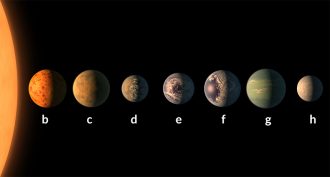 Planets
PlanetsNew solar system found to have 7 Earth-size planets
A neighboring star system hosts seven Earth-like planets. Especially surprising: Three of those planets appear to reside in a zone that could support life as we know it.
-
 Physics
PhysicsStrange X-rays point to possible ‘dark’ matter
Scientists have been looking for “dark” matter. It’s supposed to make up most of the universe — but it’s also invisible. X-rays may now point to where some of this weird stuff is.
-
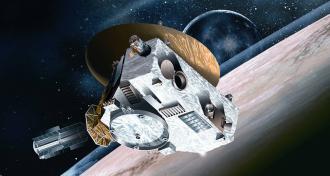 Space
SpaceCool Jobs: Probing Pluto
The New Horizons mission captivated the world as it flew by Pluto. Here are some of the people who made that possible.
By Ron Cowen -
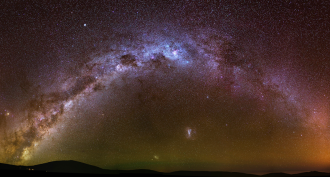 Space
SpaceRivers of stars flow between ‘clouds’ orbiting the Milky Way
Two streams of stars flow between dwarf galaxies known as the Magellanic Clouds. This new finding could give clues to the structure of our Milky Way galaxy.
-
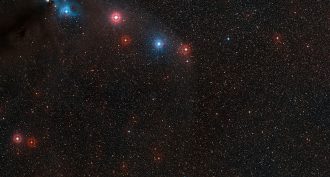 Physics
PhysicsWeird physics warps nearby star’s light
Scientists have observed a bizarre effect of quantum physics in light coming from a nearby neutron star.
-
 Space
SpaceMovie, book illuminate Hidden Figures from the space race
A new movie and book showcase the hidden heroes of the space race — the mathematicians who crunched the numbers.
-
 Planets
PlanetsScientists Say: Proxima b
A new planet outside our solar system is only 4.2 light years away.
-
 Space
SpaceClouds on Jupiter run surprisingly deep
Jupiter’s clouds are not just a thin jacket about the planet, new data show.
-

-
 Space
SpaceGalaxy count has just spiked
The universe may have hosted 2 trillion galaxies. That’s about 10 times as many as astronomers had thought were out there.
-
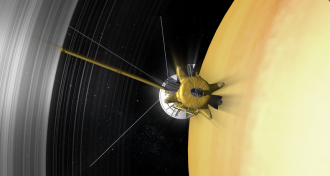 Planets
PlanetsA trail of cosmic dust may lead to alien life
Liquid water can be found even in the cold reaches of the outer solar system. Some hidden oceans may harbor warm oases cozy for living things.
By Douglas Fox -
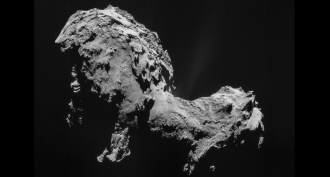 Space
SpaceScientists Say: Comet
Comets are small solar system objects. When they pass close to their sun, their melting gases and water give them a tail.